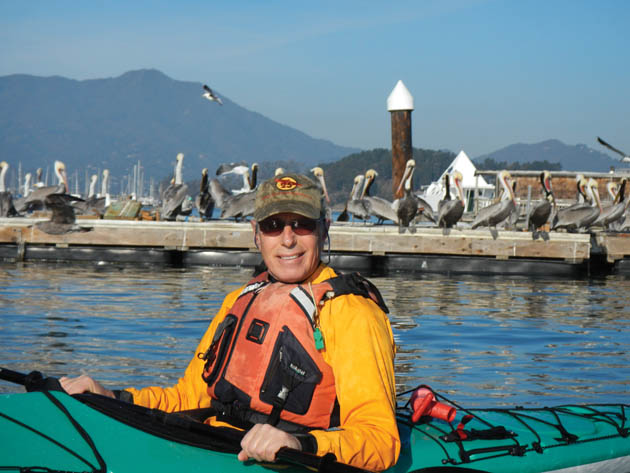t’s been said that in California “water flows uphill toward money.” Of course, there isn’t a whole lot of water running anywhere in California these days. Which makes it all the more likely that what there is will indeed follow that old dictum.
We are, as you know, in the third year of a severe drought, with 58 percent of the state experiencing “exceptional drought” conditions. What does that mean on the ground? According to researchers at UC Berkeley, it means record low soil moisture, putting severe stress on perennial plants. According to the California Department of Fish and Wildlife, it means a dramatic reduction in the number and size of seasonal wetlands and flooded fields available to the 10 to 12 million ducks, geese, cranes, and other birds that travel the Pacific Flyway to the Sacramento and Central valleys each fall. And according to officials from local resource conservation districts, it means that some ranchers have had to cull their herds due to shortages of water and forage.
Of course, it’s entirely possible that the situation could improve significantly with a few good early winter storms. But we have neither the power to make that happen nor the prescience to know if it will.
That doesn’t mean there’s nothing we can do. We can certainly institute meaningful conservation measures, particularly in the sectors that use the most water. Yes, we can all take shorter showers and stop watering lawns if we still have them; every little bit helps. But many of us have had low-flow shower heads since the 1970s and have already said good-bye (and good riddance) to our lawns. Moreover, with more than 80 percent of the state’s water going to agriculture, changing personal hygiene habits will only result in a few more drops in the proverbial bucket. So at least monitoring agricultural use of groundwater, as mandated by legislation recently passed in Sacramento, would be a good start.
The other thing we can do is reduce our carbon footprint, on the unproven but not unreasonable assumption that there’s a nexus between drought and climate change. As we discuss in our article on the drought, we can say with certainty that climate change exacerbates the effects of a drought through higher temperatures (the past year has been the state’s warmest on record) and the resulting increase in evapotranspiration (the loss of moisture into the atmosphere): When it’s hot, moisture evaporates at a faster rate, and less water is therefore available for us to drink (think of the evaporation from the surface of reservoirs) and for plants to retain.
But what we don’t know yet is if climate change is itself a cause of this drought. That’s a complex question—involving atmospheric wind patterns and global ocean currents—but not an academic one. Because if climate change is a cause, then the current crisis is a harbinger of worse to come rather than just part of our state’s typical drought/flood pendulum. And that raises the stakes considerably for Proposition One, the $7.25 billion water bond appearing on the November ballot. With its combination of funding for watershed restoration, water conservation and recycling, and major storage and delivery infrastructure, the measure has support from both sides of the aisle.
Most environmental groups support the proposed investments in restoration, conservation, and recycling as responsible ways to stretch the state’s limited water supply. But they’re less happy about the $2.7 billion for storage and delivery projects. If this simply means more dams, it won’t increase the state’s water supply by a single drop. And it may just encourage large agricultural users to continue their less-than-efficient practices. However, that might be the necessary political trade-off to get the conservation and restoration funding. I haven’t yet seen a clear consensus emerge from the environmental community in support for or opposition to the bond, so I hope we’ll all take a closer look, consider the pros and cons, and then get out and vote accordingly. Keep in mind that none of the proposed measures would have any impact for several years. So whatever the outcome of the vote, it will take a few good storms and stepped-up conservation to get us out of this drought.


